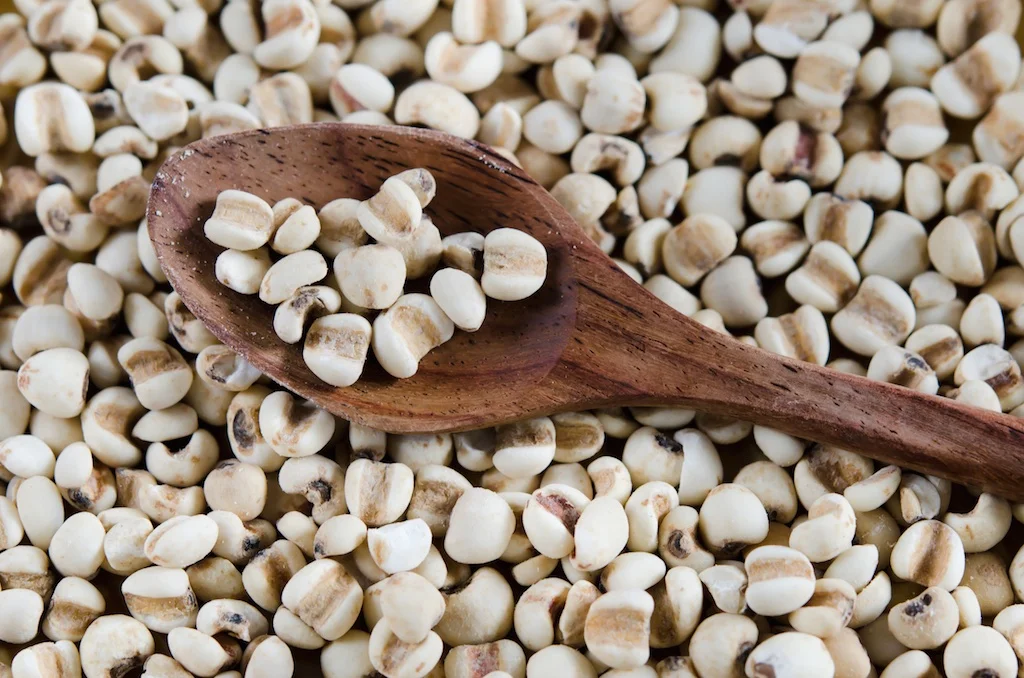Recipe for Chinese pearl barley water (薏米水)
In Hong Kong where my folks are from, a lot of attention is paid towards our diet and on the foods and drinks that are most appropriate to take according to your health. Although I grew up in the UK with this way of looking at food, it wasn't until when I studied Chinese medicine and specifically Chinese herbal medicine that I really grasped the complexities of how Chinese medicine saw food and its relationship with health. Small tweaks in the diet can play an important tole in re-balancing a person's system and in China where healthcare is not always readily available or affordable, food is often seen as the first port of call, especially for self-limiting illnesses such as coughs and colds.
In this blogpost, I wanted to share with you one of my favourite and most commonly dished out recipes in my clinic - Chinese pearl barley water, yi mi shui (薏米水). Although I see it commonly used throughout Hong Kong, I later found that it's also popular in Singapore where by husband's family is from, and also in Southern China in general where the climate is hot and where this recipe's cooling function is particularly useful.
Chinese pearl barley, also known as Job's tears, coix seed or in Chinese yi yi ren or yi mi (薏苡仁/薏米), is a gluten-free grain and makes a really delicious dessert drink or daytime snack. It's used in Chinese herbal medicine for its cooling and diuretic function and it tends to be used in Hong Kong as a medicinal food for symptoms such as fever, sore throat, headaches or congestion in the nose or chest. Being a grain, it's bland in flavour and the recipe below includes a small amount of sugar which makes it a great recipe for kids!
Chinese pearly barley, also known as Job's tears or coix seed, has a distinct brown groove along the grain.
In the UK, Chinese pearl barley can be found in most Asian supermarkets. The closest one to Hemel Hempstead is probably the Wing Yip supermarket in Cricklewood at Staples Corner or the Hoo Hing supermarket in Park Royal near Hanger Lane, but it can also be bought from supermarkets in London's Chinatown. Good stockists will sell both raw or cooked variations - for this recipe, it's best if you use the raw version.
CHINESE PEARL BARLEY WATER RECIPE
Ingredients
- 100g raw Chinese pearl barley, rinsed
- 1.5 - 2 litres of cold water
- Brown sugar or rock sugar to taste
- 2-3 pandan leaves, rinsed and tied into a knot (optional)
You will need:
Saucepan or pot, ideally earthenware or glass
Directions
- Rinse the Chinese pearl barley and add to a saucepan/pot.
- Add the cold water to the saucepan/pot and bring to the boil.
- Once on a rolling boil, reduce the heat and simmer for approximately 45-60 minutes, stirring every so often.
- This is ready once the barley is soft on the outside but slightly chewy on the inside, resembling of popcorn or rice. The liquid will turn slightly cloudy and greyish pink.
- If you are using pandan leaves, add this and simmer for around 5-10 minutes. Remove the pandan leaves at the end as overcooking will give the water a slightly bitter taste.
- Finally, add brown sugar or rock sugar to taste.
- This is best served warm in a bowl. Although this can be taken chilled, in Chinese medicine we generally advise taking this warm.
- Although the barley water can be taken alone, I generally recommend serving this with at least a couple of tablespoons of barley to be eaten within each bowl.
HINT 1: If you are not eating this in one sitting, this can be stored in the fridge and enjoyed within a couple of days. If you plan to store it, it's best to separate the barley from the barley water and store them in the fridge in separate containers. This will stop the barley from swelling up too much and the barley water from becoming slimey.
HINT 2: Sometimes I'll use leftover Chinese pearl barley in soups, stews, casseroles or broths to give it extra bite.
This is a really simple and versatile recipe and one I hope you will enjoy. If you've found, or already use, variations of this that you'd like to share, it would be great to hear from you so do send me an email!

